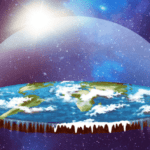Among the many medical anomalies humans may face, some diseases are so strange they defy logic and challenge our understanding of biology. These rare conditions sound like science fiction, yet they profoundly impact those afflicted. From bizarre to terrifying, these diseases puzzle medical professionals and evoke curiosity.
While incredibly rare, these conditions show us the complex nature of our bodies. Exploring these diseases reveals the diversity of human pathology. Each presents unique symptoms and challenges, requiring unique approaches to treatment and care. By delving into these unusual diseases, we learn about the fragility and resilience of the human body and appreciate medical advancements.
Maple Syrup Urine Disease
Maple syrup urine disease (MSUD) is a rare metabolic disorder where the body can’t break down certain amino acids, leading to sweet-smelling urine like maple syrup. It mainly affects infants, and if untreated, can cause severe neurological damage or even death. Early diagnosis and dietary management are crucial.
The sweet odor comes from accumulated branched-chain amino acids and their toxic by-products in the blood and urine. Symptoms appear within days of birth, including poor feeding, vomiting, lethargy, and abnormal movements. The disease is inherited, meaning both parents must carry a defective gene.
Treatment involves a strict diet low in these amino acids, supplemented with a special formula. Regular blood level monitoring is essential. With proper management, individuals with MSUD can lead relatively normal lives.
Advancements in genetic research and newborn screening have improved the prognosis. Early detection allows prompt intervention, reducing the risk of complications. [1]
Alien Hand Syndrome
Alien hand syndrome (AHS) is a rare neurological disorder where a person’s hand moves involuntarily, as if it has its own will. This condition often results from brain surgery, strokes, or neurodegenerative diseases that affect the brain’s control over voluntary movement. People with AHS may find their hand performing actions they did not intend, such as grabbing objects or touching their face.
The primary cause of alien hand syndrome is damage to the brain, particularly the corpus callosum, which connects the two hemispheres. This can happen during surgeries intended to treat epilepsy or due to other forms of brain trauma. Patients often describe their hand as behaving independently, which can be both distressing and disruptive to daily life.
Managing AHS involves behavioral techniques to control the hand’s movements, such as keeping the hand occupied with an object. While there is no cure, ongoing research aims to better understand this condition and improve treatment options. [2]
Fish Odor Syndrome
Fish odor syndrome (FOS), known medically as trimethylaminuria (TMAU), is a metabolic disorder causing a person’s sweat, breath, and urine to emit a strong, fish-like odor. This rare condition occurs because the body can’t break down trimethylamine, a compound produced in the gut. The excess trimethylamine is released in bodily fluids, resulting in the characteristic odor.
The primary cause of fish odor syndrome is a genetic mutation affecting the enzyme responsible for processing trimethylamine. This mutation can be inherited, meaning both parents must carry the defective gene. Symptoms vary in intensity, with some individuals experiencing mild odors while others have pronounced and persistent smells.
Living with FOS can be socially and emotionally challenging. The noticeable odor often leads to embarrassment, anxiety, and social isolation. Treatment involves dietary changes to reduce the intake of precursors found in foods like fish, eggs, and legumes. Some patients benefit from supplements and medications that help reduce the production of trimethylamine. Despite its rarity, FOS significantly impacts those affected. Ongoing research aims to find more effective treatments. [3]
Stone Man Syndrome
Stone man syndrome, scientifically known as fibrodysplasia ossificans progressiva (FOP), is a rare and debilitating genetic disorder where soft tissues progressively turn into bone. This condition causes muscles, tendons, and ligaments to ossify, creating a second skeleton that restricts movement. The process usually begins in childhood and advances throughout life.
FOP is caused by a mutation in the ACVR1 gene, which plays a crucial role in bone formation and growth. Even minor injuries can trigger rapid ossification, leading to painful and irreversible joints and muscle stiffening. As the disease progresses, individuals lose mobility, making everyday activities difficult and leading to severe disability.
There is currently no cure for stone man syndrome, and treatment focuses on managing symptoms and preventing flare-ups. Doctors often advise avoiding activities that could cause injuries and using medications to reduce inflammation and pain.
Living with FOP requires significant adjustments and support. The progressive nature of the disease means that those affected must continuously adapt to new limitations. Awareness and understanding of stone man syndrome are crucial for providing adequate care. [4]
Laughing Death (Kuru)
Laughing death, known scientifically as kuru, is a fatal neurodegenerative disorder that was once prevalent among the Fore people of Papua New Guinea. This bizarre disease is characterized by uncontrollable laughter, tremors, and loss of coordination, eventually leading to death. Kuru is caused by infectious proteins called prions, which induce abnormal folding of normal brain proteins.
The transmission of kuru was linked to the practice of ritualistic cannibalism among the Fore tribe, where deceased relatives were consumed as part of their funeral rites. Ingesting infected brain tissue facilitated the spread of prions, leading to outbreaks of the disease. Symptoms typically began with headaches and joint pain, progressing to severe neurological impairment and emotional instability.
Efforts to eliminate kuru focused on ending the practice of cannibalism. Public health campaigns successfully educated the Fore people, leading to the cessation of these rituals and a dramatic decline in new cases. However, the historical impact of kuru remains a poignant reminder of the intersection between cultural practices and infectious diseases. [5]
Water Allergy (Aquagenic Urticaria)
Water allergy, or aquagenic urticaria, is an exceptionally rare condition where contact with water causes hives and severe itching. This allergy can be triggered by water at any temperature, including sweat and tears, making it a highly debilitating condition. The exact cause of aquagenic urticaria is not well understood, but it is believed to involve a hypersensitivity reaction to an unknown substance in the water.
Symptoms typically appear within minutes of water exposure. Affected individuals experience red, itchy welts that can vary in severity. Even routine activities like bathing, swimming, or getting caught in the rain can trigger a painful reaction. The condition is not limited to any specific type of water, meaning both tap water and natural bodies of water can cause symptoms.
Living with aquagenic urticaria requires significant lifestyle adjustments. Protective measures, such as applying barrier creams or taking antihistamines, can help manage the symptoms. However, there is no cure, and the condition often persists throughout life. Due to its rarity, research is limited, and those affected often feel isolated and misunderstood. [6]
Pica
Pica is a perplexing eating disorder characterized by the compulsive ingestion of non-food items. Individuals with pica may consume substances such as dirt, clay, chalk, paper, or even metal. This condition can occur in both children and adults and is often associated with other mental health disorders, nutritional deficiencies, or developmental issues.
The exact cause of pica remains unclear, but it is believed to stem from a combination of psychological, cultural, and nutritional factors. For example, some people with iron or zinc deficiencies may crave and consume non-nutritive substances. Pica can also be linked to stress, obsessive-compulsive disorder, and pregnancy, where unusual cravings are not uncommon.
Consuming non-food items can lead to serious health complications, including intestinal blockages, poisoning, and dental problems. Medical evaluation is crucial for individuals with pica to identify any underlying deficiencies or psychological conditions. Treatment typically involves addressing these root causes through nutritional supplements, behavioral therapy, and counseling. [7]
Tree Man Syndrome (Epidermodysplasia Verruciformis)
Tree man syndrome, scientifically known as Epidermodysplasia verruciformis (EV), is an extremely rare genetic disorder characterized by the growth of bark-like warts and lesions on the skin. These growths, caused by an abnormal susceptibility to human papillomavirus (HPV), can appear anywhere on the body but are most commonly found on the hands and feet. The condition often leads to severe disfigurement and significant physical discomfort.
Epidermodysplasia verruciformis is inherited, meaning both parents must carry the defective gene. The disease typically manifests in childhood or early adulthood, with the warts growing progressively over time. These lesions can become so extensive that they resemble tree bark, hence the name tree man syndrome.
The growths associated with EV are not only cosmetically distressing but can also increase the risk of skin cancer. Treatment options are limited and primarily focus on surgical removal of the lesions, although the warts often regrow. Other treatments, such as retinoids and immunotherapy, are being explored but have shown varying degrees of success.
Living with tree man syndrome requires ongoing medical care and support. The condition’s rarity means that research is limited, but increased awareness can help drive funding and interest in finding more effective treatments. [8]
Werewolf Syndrome (Hypertrichosis)
Werewolf syndrome, medically known as hypertrichosis, is a rare condition characterized by excessive hair growth all over the body, including areas where hair typically does not grow. This abnormal hairiness can give individuals a werewolf-like appearance, hence the name. Hypertrichosis can be congenital, present at birth, or acquired later in life due to certain medications or medical conditions.
The underlying cause of congenital hypertrichosis is often genetic mutations that lead to the overproduction of hair. In some cases, it is linked to other genetic disorders. Acquired hypertrichosis, on the other hand, can be triggered by drugs such as minoxidil, certain cancers, or metabolic disorders. The excessive hair growth can range from fine, lanugo-like hair to thick, dark hair resembling a pelt.
Managing hypertrichosis primarily involves cosmetic procedures such as shaving, waxing, or laser hair removal to reduce hair growth. However, these treatments are often temporary and must be repeated regularly. For many, the psychological impact of hypertrichosis is significant, leading to social anxiety and self-esteem issues. Despite its rarity, werewolf syndrome has captivated public imagination and media attention. [9]
Exploding Head Syndrome
Exploding head syndrome (EHS) is a sleep disorder that causes sufferers to experience sudden, loud noises or explosive sensations in their heads just as they are falling asleep or waking up. These sounds, often described as a bomb exploding, a gunshot, or a loud clash of cymbals, are not real but rather a figment of the person’s mind. Although EHS is harmless, it can be extremely frightening and disruptive to sleep.
The exact cause of exploding head syndrome is not well understood, but it is thought to be related to minor seizures in the brain, sudden shifts in the middle ear components, or issues with the brain’s auditory processing during the transition between wakefulness and sleep. Stress, anxiety, and fatigue are known to exacerbate the condition.
Symptoms of EHS include the sensation of a loud noise or an explosive sound, sometimes accompanied by a flash of light or muscle jerks. The episodes are usually painless but can cause significant distress and anxiety, leading to difficulties in falling back asleep. Many people experience EHS only occasionally, but it can occur frequently for some.
Management of exploding head syndrome focuses on reducing stress and improving sleep hygiene. Techniques such as relaxation exercises, maintaining a regular sleep schedule, and avoiding caffeine and heavy meals before bed can help mitigate the episodes. While EHS is not dangerous, understanding and managing it can greatly improve the quality of life for those affected. [10]
These strange diseases remind us of the incredible complexity and fragility of the human body. While rare, understanding these conditions helps us appreciate medical advancements and the ongoing quest to improve lives. From metabolic disorders to neurological oddities, each disease tells a unique story of human resilience and scientific inquiry.
Which of these diseases did you find most surprising? Leave your comment below!










